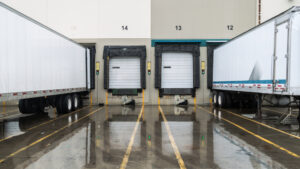What is a Freight Broker?
A freight broker is essentially a “middle man” between two parties: a business that requires the careful shipment of goods, and the authorized motor carrier who will be doing the shipping. A freight broker doesn’t actually transport anything themselves. Instead, think of them more as an important part of the logistics side of the equation.
They will help make sure that the needs of the client business are understood and taken care of all throughout the process. They’ll match that client up with a carrier capable of meeting their specific needs. They help manage financial risk for all parties and can even assist in addressing things like carrier safety, compliance, and potential fraud.
One of the many benefits of being a freight broker is that there is virtually no limit on the amount of money you can make. You get to be an active part of the logistics industry without commuting or spending a lot of time on the road, and there are also low startup costs as well. Being a freight broker also comes with low overhead expenses as you don’t have to worry about actually shipping the goods or paying to properly maintain a fleet of vehicles.
In order to operate as a freight broker, however, you will need to get your freight broker license. This isn’t necessarily a difficult process, but it is a precise one that you must follow. There are a few steps in particular that you’ll definitely want to account for moving forward.
Steps to Acquiring Your License
1. Meet Requirements
Arguably, the most important step to getting your freight broker license involves making sure that you meet all the necessary requirements to embrace this long and fruitful career. That means investing in training if you have not already had the opportunity to do so.
There are a wide range of online training courses you can take that will give you the knowledge you’ll need to excel while on-the-job. There are also a number of training books that can help you out. If you already have a freight brokerage company that you’re planning on working with but just haven’t met the formal requirement of having a license yet, you’ll likely be able to speak to them to get some hands-on practice and experience.
Remember that this is absolutely one of those situations where “continuous improvement” is a goal that you should be striving for.
2. Gain Knowledge of the Industry
During this period, you’ll also want to gain as much knowledge about the industry itself as possible. Don’t lose sight of the fact that this is a business, the same as anything else. So you’ll want to know as much as you can about the ins and outs of how things work, all so that you can use this knowledge to your advantage.
Case in point: choosing a business structure. For tax purposes, there are three main structures you can choose from depending on your needs. You could be a sole proprietorship, a partnership, or a corporation. There is no “one size fits all” answer regarding which type you should select. Each will have long-term implications regarding how you can earn money and how you’ll be taxed on that income. If you’re not sure where to begin or are confused about the intricacies of the process, it’s always recommended that you consult the help of a business attorney. That way, you can be confident knowing that you’re making the best decision possible.
3. Obtain a DOT Number
In order to operate a freight brokerage business in the United States, you need to have a DOT (or USDOT) number. This is something that you get through the Federal Motor Carrier Safety Administration, otherwise known as the FMCSA for short.
Note that you will obtain your DOT number when you fill out and submit form OP-1 (see below for additional information). However, because this is a strict requirement for operating at all, it’s important enough that it warrants a separate mention.
4. Register with FMCSA
It’s also important to note that you will need a process agent not just in the state that you’re based in, but in every state that you plan on writing broker contracts in. This is essential because in the event that you are ever sued, the process agent is the person who will agree to accept any court papers on your behalf. This is who a process server would look for to serve a summons, for example.
To properly register with the FMCSA, you’ll need to fill out CForm BOC-.
5. Obtain a Trust Fund or Bond
As per the Moving Ahead for Progress in the 21st Century Act, all freight brokers are required to have a $75,000 freight broker bond. This is a special type of bond that covers not only yourself, but also any of your affiliates, for up to $75,000 in the event that any claim filed against you is successful.
In terms of running a business, this bond helps to immediately give you a much-needed level of credibility. It’s also a way to prevent fraud and to compensate any shippers or other carriers that you may not pay in a timely manner for whatever reason.
6. Submit OP-1 Form
Finally, once you’ve completed all the aforementioned steps and your business structure is firmly in place, you’ll want to fill out your OP-1 form. This is an application form that will get sent to the FMCSA that includes a general overview of who you are and how you plan to operate.
Just a few of the pieces of information you’ll need to submit along with your application include but are not limited to ones like:
To speak to the type of operating authority in particular, you’ll have two options to choose from depending on your situation: a “Broker of Household Goods” or a “Broker of Property (Except Household Goods).” This will be directly impacted by the career path you see for yourself.
Note that when you submit your OP-1 form, you will also have to pay a filing fee for each type of license you have in mind. As of 2024, that filing fee is $300.
If you’d like to find out more information about the important steps you need to take to get your freight broker license, or if you have any additional questions that you’d like to go over with someone in a bit more detail, please don’t hesitate to contact the team at Advanced Commercial Capital today.










